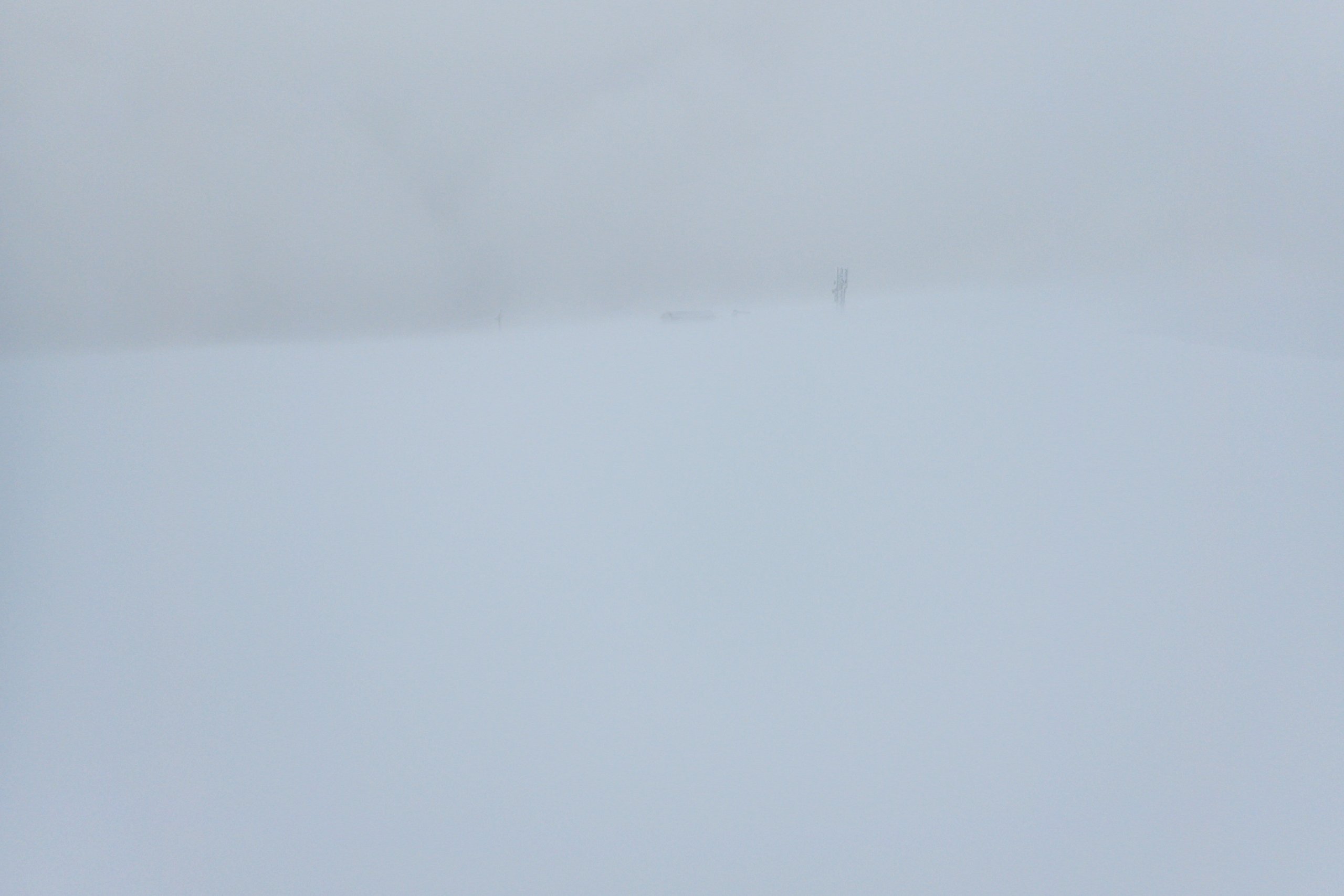Where the wind blows
26th March 2021
Covid -19
The Scottish Avalanche Information Service issues information to support permitted activity under current Scottish Government guidance.
This blog is intended to provide hazard and mountain condition information to help plan safer mountain trips.
It was a breezy and showery day on Aonach Mor today. With the freezing around 700 metres these showers fell as snow. Visibility was pretty poor when I was up at the top. I was however, able to just make out a recent crown wall in the top of Easy Gully. There was plenty of snow blowing around. The wind was at that speed that it was easily strong enough to transport the snow, but not too strong that much of the blowing snow would dissipate back into the atmosphere (as tends to occur when the wind is very strong). However, some more on the wind below.

The view to the crags on the South side of Easy Gully.Â

Looking back to the summit hut and phone mast. Notice the hut and base of the mast are almost obscured by blowing snow while a few meters higher the top of the phone mast is a bit more visible.Â
Both the strength and direction of the wind are important factors in determining the location and severity of the avalanche hazard. However, when operating in the Scottish hills in winter the wind does a lot more than that, it affects almost aspects of a mountain day. Physically it pushes you about and tries to blow you over, it can make walking much more strenuous, and in extreme conditions much more hazardous, than in calm conditions. Visually it blows snow around obscuring visibility. It helps dictate where the snow accumulates, walking along a scoured ridge is a very different experience than floundering in deep soft snow in a gully. It affects the mountain plants, where they can the grow and how tall they can grow. It affects where treeline, the altitude to which trees are able to grow. Imagine how different the Scottish hills would be it they were not under such a turbulent part of the atmosphere.
Why so philosophical about the wind you may ask. Well I recently did a wee bit of analysis of the wind direction this winter as compared to previous winters, and found the results which are shown below, quite interesting. Some winters are very much dominated by South-Westerlies (pink in the colour scheme below). Last winter for example 64% of the days wind was recorded, it was from that direct. That tends to lead to a wet and relatively mild winter (like last winter). This winter only 22% of the days was the wind from that direction. It was not the least SW winter, in 2008/09 only 11% of days was the wind from that direction. However, this winter was the one with the most number of days when the wind had an easterly component, with the wind being from the NE, E or SE on 35% of days. The second most Easterly dominated winter was 2017/18 (remember the beast from the East) with 32% of days. I could go on rattling off statistics, but in some ways that obscures what is most significant. Scottish winters are always quite interesting and variable wind and weather wise, but this one seems to have been more so than most.

Comments on this post







Gregor
26th March 2021 11:21 pm
With warmer a wetter long term forecast I.e ocean and climate warming Ithink there will be a more predominance of south westerlies, with more extreme oscillation due to the âstratospheric riverâ phenomenon?